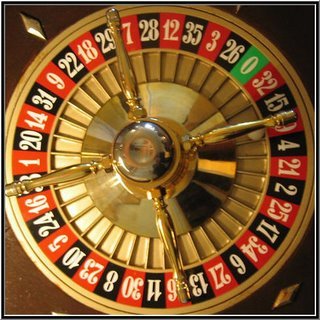
Like all casino games, the odds of winning at roulette are stacked against punters, but now researchers claim they have unlocked the physics behind the game to give players a better chance of beating the house.
A new study shows how a computer programme can be used to give gamblers a return of 18%, rather than the 2.7% loss that would be expected from merely playing the odds.
In roulette, a ball is rolled around the rim of a wheel spinning in the reverse direction. Eventually it rolls onto the spinning wheel and is hit by one of a number of deflectors, sending it bouncing chaotically until it lands in a numbered slot.
According to the new research, knowing where the ball begins to bounce is key to narrowing down which of the 36 slots it will eventually come to rest in.
Michael Small, professor of maths of the University of Western Australia, and Dr. Chi Kong Tse, of the Hong Kong Polytechnic University, have developed a simple model for the motion of a roulette ball and wheel.
In a paper published in a recent issue of the journal Chaos, they show that if you know the initial position, velocity and acceleration of the ball you can narrow down where it will end up.
Players could use a tiny computer that, with the click of a button, records every time the ball passes a certain point on the wheel.
This information could then be used to predict when the ball would start to bounce and which group of roulette squares it will finally land in, increasing the chances of a correct guess.
“As the wheel is moving at a constant angular velocity [and] the ball is decelerating, the time interval between these passes at a particular point are going to get longer,” Professor Small told the Australian Broadcasting Corporation.
“If you measure that three times you can estimate velocity and deceleration.”
Casinos make a profit from ensuring that in each game they offer the odds are stacked against gamblers. But Professor Michael Small says his system allows punters to come out on top overall.
“We demonstrate an expected return of at least 18 per cent, well above the -2.7 per cent of a random bet,” he said.
This means that for every $1 bet, on average gamblers using the Professor Michael Small’s software can expect a return of $1.18, rather than the 97 cents return that could be expected on the house’s odds.
Professor Michael Small was able to improve the returns even more using a digital camera and image processor to track the ball. But it is likely that using such devices would annoy casinos.